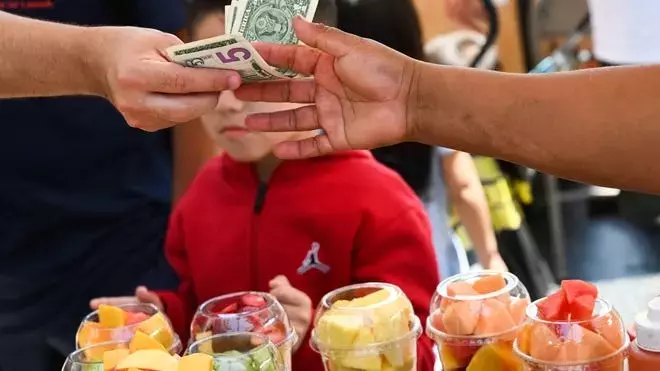
Navigating the Tightrope of Essentials and Discretionary Spending
The Burden of Essentials
Despite the recent cooling of inflation, low- and middle-income Americans are still struggling to keep up with the elevated costs of basic necessities, such as groceries, shelter, utilities, and gasoline. Even as wages rise, the gains are often outpaced by the persistent high prices, leaving little room for discretionary spending on non-essential items like dining out, vacations, and entertainment.The disproportionate impact on lower-income households is particularly acute, as essentials account for a larger share of their budgets. As Michael Pearce, the deputy chief U.S. economist at Oxford Economics, notes, "For a very large share of Americans, the bottom 60% are spending more on essentials than before the pandemic. The burden is hardest among the lowest income but also touches middle income. Spending patterns of low-income Americans will take years to recover."
The Primerica Household Budget Index (HBI), which assesses the affordability of everyday necessities and changes in earned income, provides a telling snapshot. While the HBI has recently moved above 2019 levels, indicating a slight improvement, it still falls short of the level it would have reached had the inflation wave not occurred. As Amy Crews Cutts, the economic consultant to Primerica, explains, "This difference explains a lot about low consumer sentiment that even though conditions have improved, households have made almost no financial progress in 5.5 years of hard work."
The Elusive Pursuit of Discretionary Spending
The recovery of discretionary spending, a crucial indicator of financial well-being, has been painfully slow for low- and middle-income Americans. Pearce notes that the last time discretionary spending fell this significantly was during the Global Financial Crisis of 2007-2008, and it took five to ten years for spending patterns to return to previous levels.The primary driver behind this prolonged recovery was the sharp decline in global oil prices, which pushed pump prices lower and provided much-needed relief for low-income households. However, Pearce cautions, "It's harder to see some revolutionary cost saving (like that) on the horizon," suggesting that a similar catalyst may not be readily available this time around.
Coping Strategies: Bargain-Hunting and Prioritizing Essentials
Faced with the relentless pressure of high prices, low- and middle-income consumers have resorted to various coping strategies to make ends meet. Christa Engel, a manager at a Dunkin' store in Chicago, shares her experience: "For me, since we have two incomes, it's not that bad. I do try to get stuff on sale as much as possible... like crackers, frozen pizza. We have to cut back on eating out and nonessential small treats."Amy Aaroen, a resident of Beloit, Wisconsin, has also had to make difficult choices, scaling back on "luxuries" like air conditioning, watering the garden, and visiting family. As she explains, "We have not used the central air this year as much as in the past to keep the bill down. We were careful when watering the garden so we could keep the water bill down... It (also) costs me about $50 just to go visit my family who are only 1.5 hours away or two and three hours away. I feel like the economy had us traveling less and visiting family less."
The Looming Holiday Season: Tightening Budgets and Bargain-Hunting
As the holiday season approaches, low- and middle-income consumers are bracing for the potential impact on their already strained budgets. Adam Davis, the managing director at Wells Fargo Retail Finance, anticipates that these consumers will continue to be bargain-hunters, with discretionary spending on larger ticket items likely to decline.Aaroen, however, remains cautiously optimistic, stating, "We've somehow managed to keep a budget that will probably not affect our coming holidays too much. We have 11 grandchildren and usually spend $25 to $30 on each of them. And we will probably this year as well. We may need to use the credit card though." Despite the financial challenges, Aaroen is determined to maintain the tradition of visiting family during the holidays, though she acknowledges that the frequency of such visits may be reduced.
As the nation grapples with the lingering effects of high inflation, the financial well-being of low- and middle-income Americans remains a pressing concern. The path to restoring a sense of financial stability and reclaiming the joy of discretionary spending appears arduous, requiring a delicate balance between managing essential costs and finding innovative ways to stretch limited budgets. The resilience and adaptability of these households will be crucial in navigating the road ahead, as they strive to regain their financial footing and reclaim a sense of financial security.
